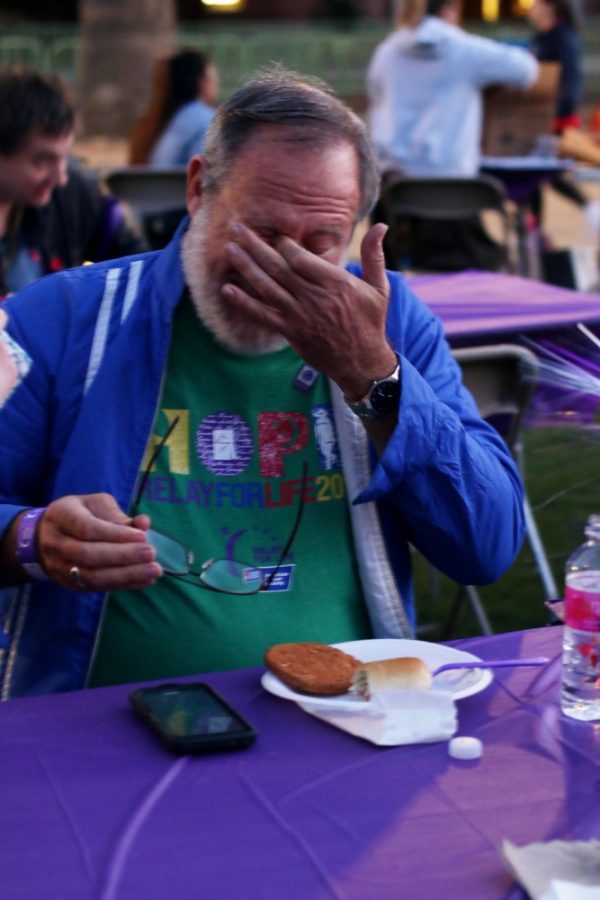The first lap of Relay for Life, a nine-hour event that strives to put an end to cancer, is taken by the survivors. Those survivors are cheered all the way around the UA Mall by their caregivers, students and community participants. The celebration of their perseverance marks the start of the fundraising walk that raises money for the American Cancer Society in the hopes of one day finding cures for all types of cancer.
The event is overnight to represent the idea that cancer never sleeps. Every person who participates in Relay for Life has been affected by cancer in some way, whether personally, by a family member or through a friend.
Kelsie Owen, a public health senior, and Aline Kraus, a physiology senior, are the student leaders for Relay for Life at the UA and they have personally seen the impact cancer has on the people around them.
“I’ve just seen how much it can help to have support there and people really root for you while they go through that terrible time,” Kraus said. “So I relay for hope, and I relay for the people who go through that diagnosis and that treatment.”
Kraus got involved with Relay for Life when her mother-in-law was diagnosed with cancer. She said she hopes to go to medical school to become an oncologist, but for now, this is how she gives back to the community.
This year, Owen took part in her 14th Relay for Life. Their passion for the cause is what brought them together to put on the event at the UA.
Renna Bazlen, a sophomore studying literacy learning and leadership , is a member of the leadership committee for the UA Relay for Life. The event also has personal meaning to her because she lost her father to cancer and her grandmother is currently fighting it.
Bazlen said she not only appreciates the relay for the money it raises for the American Cancer Society, but also for the way in which the money is raised.
“For people who are giving the money, they actually get to see the survivors and witness people who have fought it come together with other people who have had maybe experiences with people in their family or themselves,” Bazien said. “It’s just a really inspiring night because there are different parts for people who are fighting it, people who we have lost and [are] trying to prevent.”
Survivors also find a sense of hope in Relay for Life. Jeff Goldberg, a UA alumnus and Relay for Life participant, is a survivor of testicular cancer and lost his father to prostate cancer. Furthermore, his mother and grandmother both fought cancer. This year was Goldberg’s 10th relay.
“As a survivor, it’s hope,” Goldberg said. “Hope that we raise money and awareness to be able to cure cancer.”
For others, Relay for Life is a way to commemorate those who have been lost to cancer. Karen Ruggaard, a engineering management sophomore, lost her father to sarcoma cancer nearly five years ago. The first relay she participated in at Ohio State University was outside the hospital where he died.
“I’d say my favorite part is that it’s so many things coming together at once because it’s not only remembering people we’ve lost, but it’s also celebrating survivors and those fighting,” Ruggaard said. “I just really hope the efforts everyone puts in all across the nation, one day it’ll be enough to end cancer.”
One emotional part of the night for all participants is the Luminaria Ceremony. Candles are lit inside personalized bags, which are placed around the track as glowing tributes to those who have been affected by cancer. Then, all participants do a silent lap holding a candle.
“Of the 14 years I’ve been doing Relay, there has not been one Luminaria Ceremony where I haven’t cried,” Owen said.
Since its establishment in 1985, the Relay for Life movement has raised nearly $5 billion worldwide, according to its website. The money raised goes toward advocacy, education and research.
No matter what brings each participant to Relay for Life, one thing is for certain: Everyone walks the track for one goal and that is to one day put an end to cancer.
Follow Leah Merrall on Twitter.









